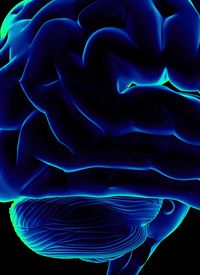Ketogenic Diet May Positively Affect Patients with Glioma
Observing the Warburg effect, researchers found that properties of the ketogenic diet could have a positive effect on outcomes for patients with glioma.
Ketogenic Diet May Positively Affect Patients with Glioma

There are a number of reasons why people maintain a low-sugar diet, including lowering body fat and decreasing their risk of developing type 2 diabetes. But now, patients with gliomas might have another reason to add to their list: potentially having better cancer outcomes from cutting the sweetness.
Recently, a group of researchers from Massachusetts General Hospital (MGH) conducted a systemic review to see if ketogenic metabolic therapy (KMT) would be safe and effective in treating patients with malignant gliomas.
“Despite many decades of research, malignant glioma — the most common type of primary brain cancer — still carries a poor prognosis and there is a pressing need for identifying and implementing more efficacious therapies,” two of the authors, Sebastian F. Winter, BSc, visiting doctoral researcher at the Neuro-Oncology Program at MGH Cancer Center, Harvard Medical School, and Jorg Dietrich, MD, PhD, clinical director of the Cancer and Neurotoxicity Clinic and Brain Research Program at MGH, said in an interview with CURE.
The basis for their study was observing the Warburg effect, which states that cancer cells produce the majority of their energy via glycolysis (the breakdown of glucose) and then lactic acid fermentation. According to the Warburg effect, cancer cells can thrive in an anaerobic (low-oxygen) environment much better than normal cells because they engage in glycolysis in a much higher rate than other cells.
“Now a recognized hallmark of cancer, this abnormal energy metabolism is also a key feature found in malignant glioma cells, whose abnormally high glucose consumption can be visualized,” the authors explained.
In clinical practice, health care professionals use this effect — along with other functional and mitochondrial abnormalities that gliomas cells have — to visualize and differentiate tumor tissue from normal, healthy tissue.
Despite this evidence, nutritional intervention that targets modification of blood glucose levels has not been heavily studied. Current standard of care (SOC) includes resection, followed by radiotherapy and/or chemotherapy treatment.
The researchers reviewed studies and interventions that used KMT, which included a high-fat, low-carbohydrate diet; calorie restriction; intermittent fasting; and other dietary protocols.
Ultimately, they found, “Neuroprotective and anti-oxidative properties of ketone bodies (KBs) in conjunction with selective starvation of malignant glioma cells may provide a less toxic and potentially a more efficacious treatment regimen that could introduce a new ‘metabolic paradigm’ to brain cancer management challenging the current SOC,” according to the study. Further, the researchers also mentioned that this kind of diet could also protect healthy tissue from the negative effects of chemotherapy and radiation.
However, despite the nutrition protocol’s effectiveness, there is not a one-size-fits-all approach, and patient compliance is also something that needs to be considered. A key strategy to optimize compliance, according to the researchers, is to have a dietician involved in the planning and implementation of the dietary habit change.
“While patient compliance is essential to the potential therapeutic success of a KMT, it necessitates a continuous lifestyle adjustment under already burdening circumstances,” the authors said.
KMT diets and their benefits for patients with gliomas are continually being studied in a number of other clinical trials — making nutrition’s role in cancer care move from being seen as “pseudo-science” to something that is globally recognized in the clinical and scientific communities, the researchers said.
“In our opinion, it is paramount for the oncological community to apply the same scientific vigor, standards and clinical investigative efforts to probe the potential therapeutic efficacy of pre-clinically promising nutritional interventions like KMT, and assess possible synergistic
compatibility with established conventional cytotoxic treatments,” Winter and Dietrich said.
The results of these further studies may have the potential to forever alter the way this group of patients is treated.
“This will help pave the way for its potential establishment as an additional therapeutic pillar in neuro-oncological practice, shedding light on important unanswered questions regarding KMT safety and efficacy, optimal dosing and implementation, compatibility with other anti-cancer treatments, as well as ethical aspects and quality of life,” the authors said.



